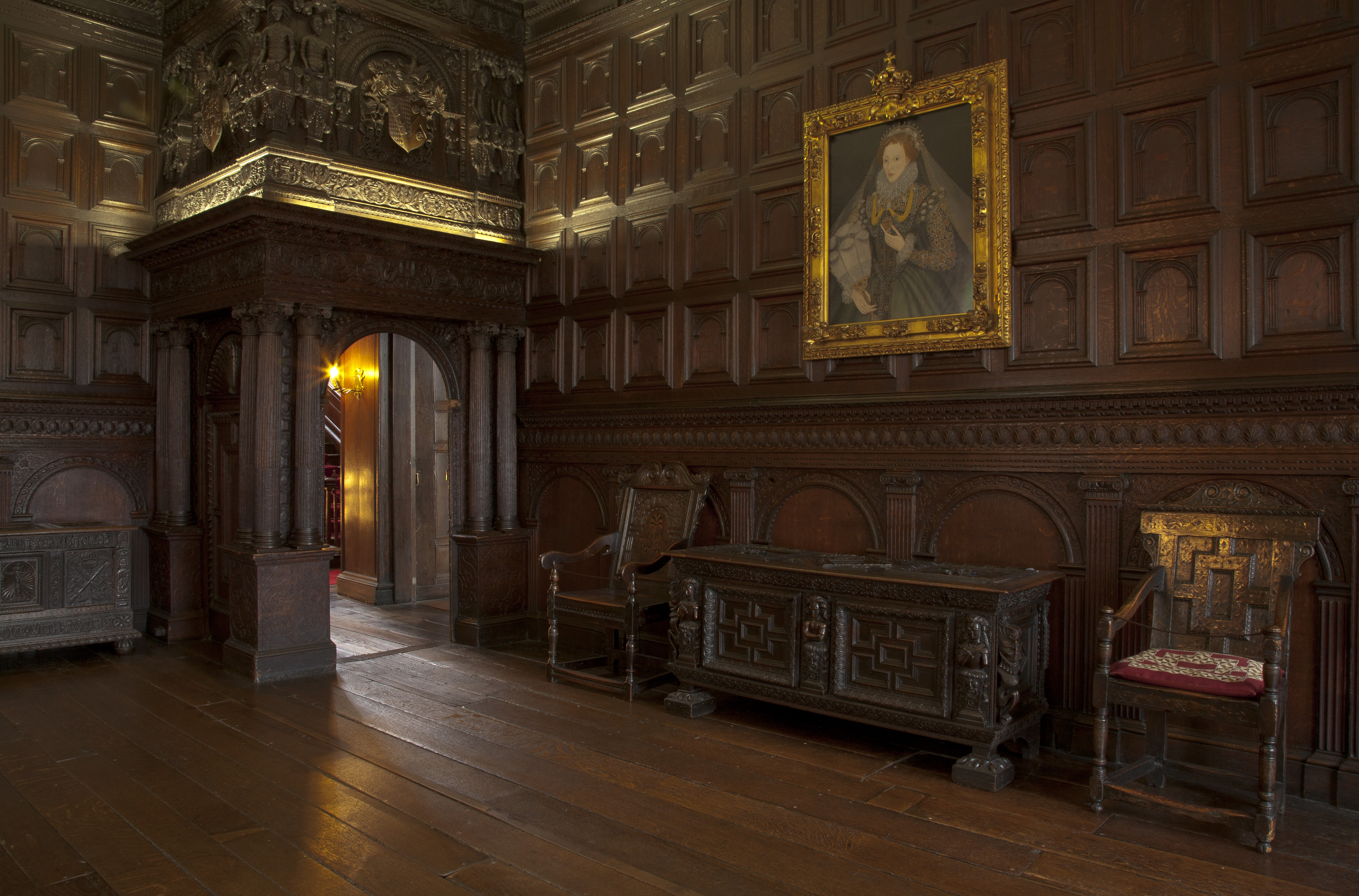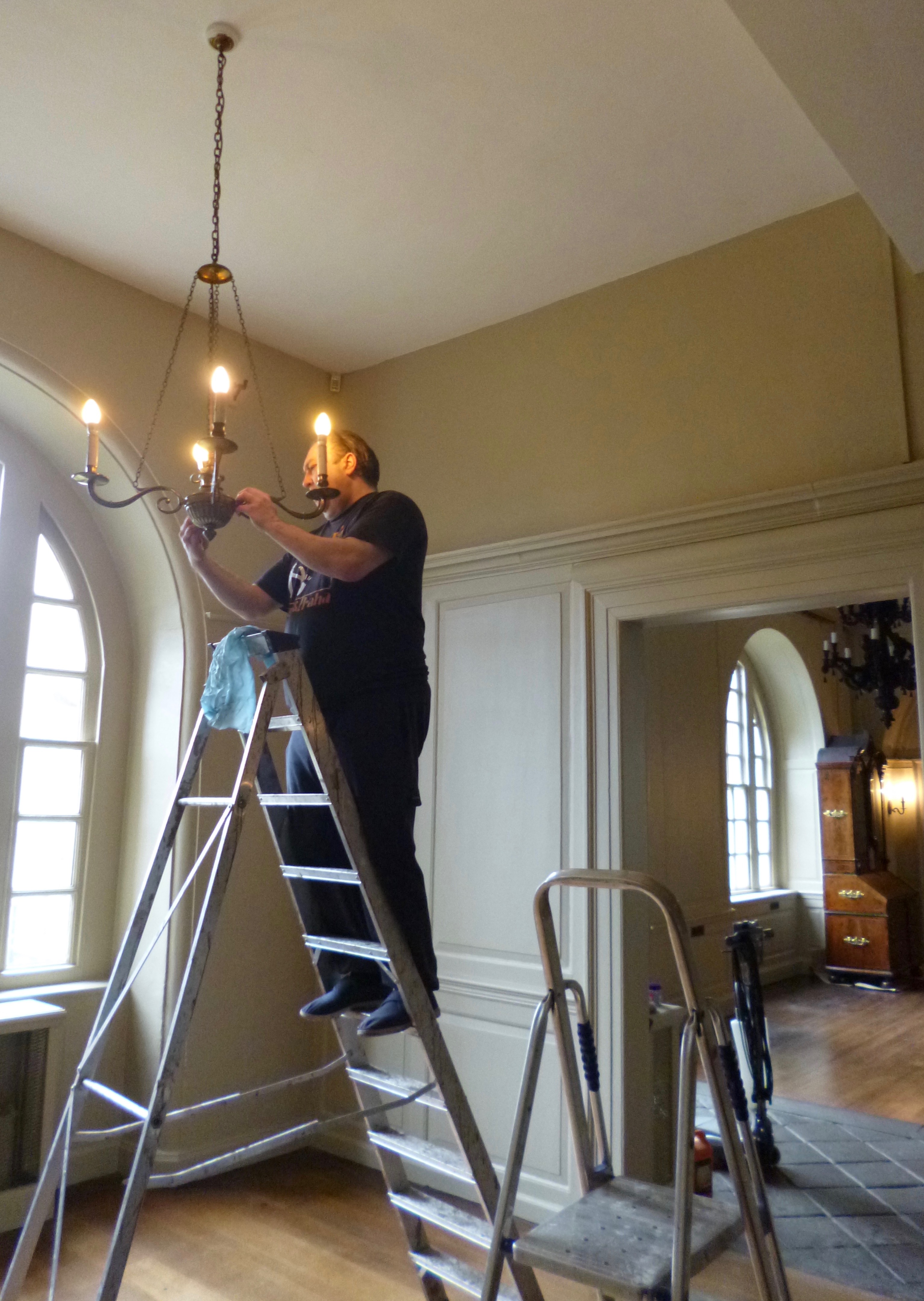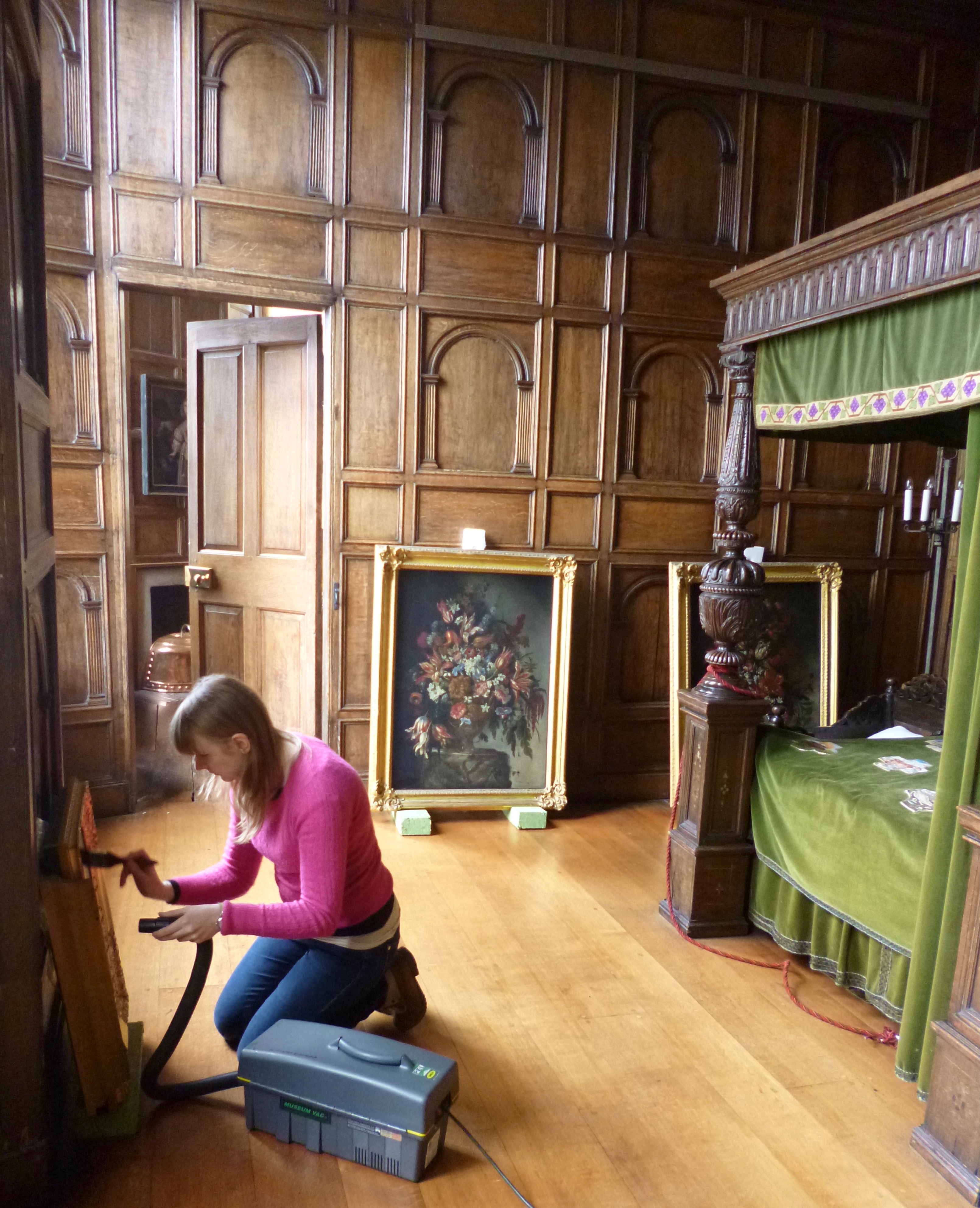Giving the Red Lodge a spruce!
Posted on by Fay Curtis.
by Helen Cobby, volunteer
After its annual winter closure, The Red Lodge Museum opened again on Saturday 1 April 2017.
Built in approximately 1579-80, it was a lodge for the merchant Sir John Younge’s Great House, which occupied the site of the present Colston Hall. The building was made from Brandon Hill sandstone, originally rendered and painted in red, hence the lodge’s name.

Sir John is known to have entertained Queen Elizabeth I when she made a visit to the city. A portrait of her, on loan to the museum service, now hangs in the Great Oak Room.
A loaned portrait of Elizabeth I hangs in The Great Oak Room and due to Her Majesty’s possible visit to Red Lodge, it has been described as a ‘royal party house’.
Unfortunately Sir John died in 1589 before the Red Lodge was complete, and his young son Robert inherited the estate. Robert’s dissolute lifestyle led him to eventually have to sell the property in 1603 and for the next 250 years the house was inhabited by various merchant families, a land speculator and a doctor, as well as twice being converted into a school.
Red Lodge is now a Grade I listed building, being one of the only surviving 16th-century buildings in Bristol, and has been a council-run museum since 1948. As a museum, it tells its history through a series of rooms that take visitors from the Elizabethan era, to the Stuart and Georgian periods.
Behind the garden gate entrance to Red Lodge from Lodge Street, it is remarkable to think that 400 years of history is waiting to be discovered! The original three rooms making up the lodge in 1580 remain intact with their intricate wood panelling, oak furniture and Elizabethan four-poster bed. These rooms, including The Great Oak Room, are three of the oldest rooms in Bristol.
The Great Oak Room is often regarded as the highlight of the house and contains some of the most finely carved oak panelling of its day, as well as a beautiful Elizabethan plaster-work ceiling. In fact, it is the only 16th-century panelled room, complete with plasterwork ceiling and stone chimneypiece, to survive in Bristol.

To get the lodge ready for re-opening, it needed a good spruce! The walls of the Reception Room have been repainted to match the original colour more closely, with the wooden chandeliers getting a much needed spring clean too.
The walnut and gilded wood furniture that normally occupies this room was given a good dusting by the curators and
conservators before being reinstalled.
The New Oak Room was added in the 1720s when the Henley family modernised the exterior and doubled the size of the lodge. The remodelled ground floor was the height of Georgian fashion, featuring sash windows and the grand staircase.

The oil paintings on the staircase include portraits of John and Mary Henley, who owned the house during its transformation in 1720.
There are also portraits of Bristol personalities from the 17th century such as Robert Yeomans, a Royalist MP who was executed during the Civil War.
Several of the paintings and their frames have been cleaned by our conservator in preparation for the lodge’s reopening.
Additionally, each of the paintings hanging in the building have been cleaned using a special vacuum cleaner.
In 1854 Red Lodge became the first ever girls’ reform school in the country, possibly in the world, after it was transformed by Mary Carpenter and Lady Byron. Marking this part of the building’s history is a workbook from the school, Mary Carpenter’s piano and an early 20th-century photograph of schoolgirls cross-stitching in front of the Great Oak Room fire. Bristol Archives contain Mary Carpenter’s diary which can be viewed at the Archives by visitors free of charge.
The Red Lodge Museum will be open from the beginning of April to the end of December 2017 for everyone to enjoy free of charge. In addition to the beautiful rooms and furniture already mentioned, the lodge also contains a room full of 17th-century prints, an illuminated and recently discovered well, and an Elizabethan-style knot garden.